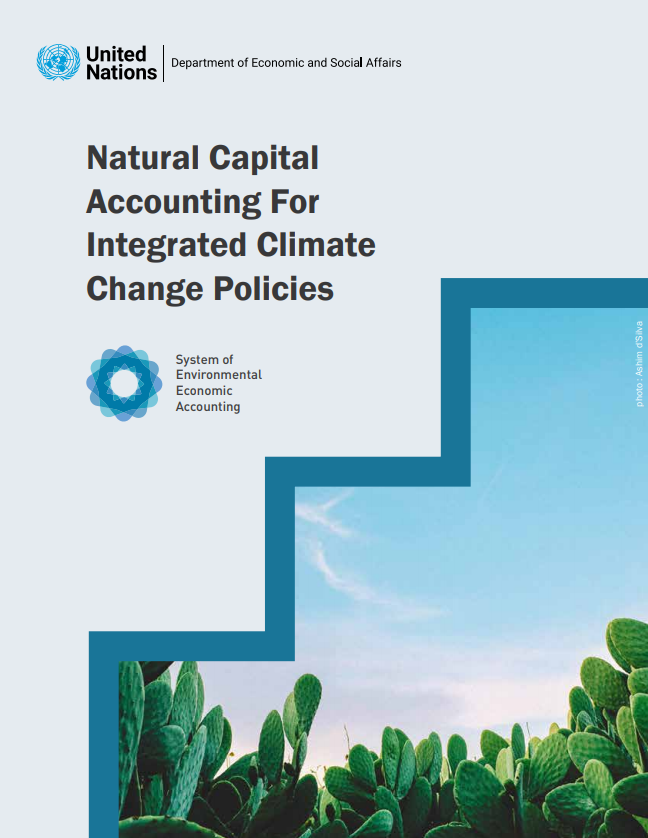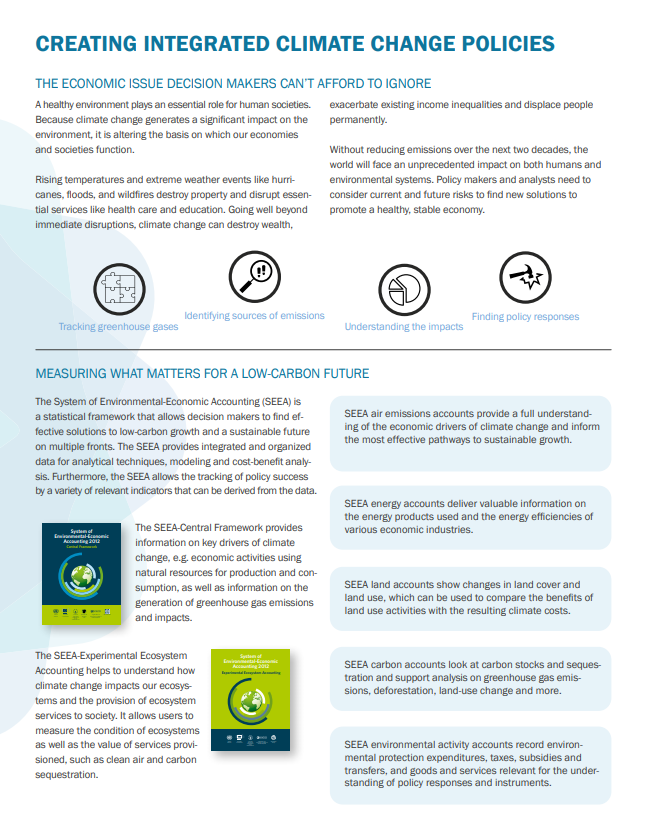Climate Change

Climate change is a major challenge which directly impacts the environment, economy and social wellbeing of every person on Earth and of future generations. The Paris Agreement, a landmark pact to combat climate change, signed by 184 countries in April 2016, launched an ambitious global effort to reduce greenhouse gas emissions and adapt to a changing climate.
SEEA accounts are well-suited to support climate policy at all levels of government. Its integrated approach, building on existing greenhouse gas emission inventories along with other climate change data, provides a complement to the existing Intergovernmental Panel of Climate Change (IPCC) framework. The SEEA’s alignment with the System of National Accounts makes it particularly helpful for understanding issues such as the climate footprint of different economic activities, the vulnerabilities of different economic sectors to climate impacts, and the current levels of expenditure on climate mitigation and adaptation.
Climate-related uses of the SEEA, include:
- Assessing the role of economic activities and household consumption in generating emissions and informing mitigation strategies by providing consistent information by economic sector on energy use (by type) and the resulting air emissions from agriculture and changes in land use, the value of investments in mitigating technologies, as well as the distribution of emission (or carbon) credits.
- Informing adaptation strategies by tracking expenditures and investments on adaptation by economic sectors or household and analyzing impacts in terms of changes in condition of ecosystems, disasters, and reduced production, for example of crops.
- Providing a comprehensive overview of how much carbon is stored per ecosystem type (and in carbon pools) and how this develops over time due to sequestration, deforestation and afforestation, as well as harvesting, forest fires etc.
- Assessing how climate change impacts economic activities and households, through the effects it has on ecosystems and the services they provide. The accounts can also be used to assess issues such as land degradation, water shortages and biodiversity. They can serve as inputs into scenario modelling linking economic activities and the environment.
The SEEA complements some of the approaches used by the IPCC framework to provide a comprehensive picture of the economy-environment relationship. For example, the air emission accounts are constructed differently to the national emission inventories established under the international conventions, such as the UN Framework Convention on Climate Change UNFCCC and the Convention on Long-Range Transboundary Air Pollution (CLRTAP). This is because the SEEA uses the classifications, definitions and concepts of the System of National Accounts, which in turn allows the information in the SEEA to be coherently linked to indicators such as GDP. A best practice is to compile bridge tables that reconcile both approaches. More on how the SEEA can and has been used for climate change policies can be found in our publication, Natural Capital Accounting for Integrated Climate Change Policies (United Nations, 2020).
Furthermore, the SEEA as an international statistical standard and accounting framework provides a unifying base for the derivation of many climate change related indicators, including the indicators in the Global Set of Climate Change Statistics and Indicators. Accounting principles, which are at the heart of the SEEA, together with the compilation process requiring the integration of basic data from various sources into a unified accounting framework, facilitate the confrontation of these data, ensuring the quality of statistical outputs and, in turn, improved information for the formulation of climate change policies.


